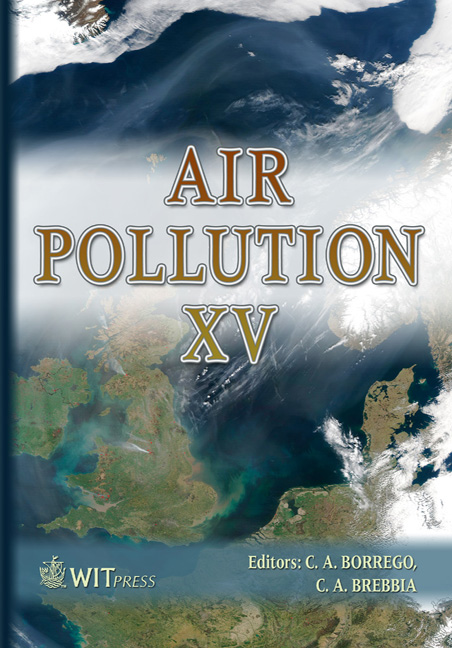Mapping Anthropogenic B(a)P Releases In The Great Lakes Basin
Price
Free (open access)
Transaction
Volume
101
Pages
10
Published
2007
Size
695 kb
Paper DOI
10.2495/AIR070301
Copyright
WIT Press
Author(s)
Y.-F. Li , C. Yang , D. Li & S. Michajluk
Abstract
Benzo(a)pyrene (BaP) is one of the most toxic PAHs. It is listed as a priority toxic substance with a target for virtual elimination under the Great Lakes Bi-national Toxics Strategy (GLBTS). At the GLBTS’s meeting in December 2005, BaP monitoring data of both Canada and U.S.A. shows that ambient BaP concentrations at urban sites are 10 times higher than those in rural sites, reflecting a significant local source contribution. This paper is prepared to (1) Map the local releases in nine province/states of the Great Lakes Basin (2) Analyze sources of BaP in high-releasing regions (3) Map ambient air monitoring data in the Basin. The BaP inventories used for the mapping originated from USEPA’s 1999 National Emissions Inventory (NEI) and Environment Canada’s Ontario inventory 2003. Approximately 27,000 kg of BaP releasing from the Basin’s anthropogenic sources were mapped, with 30% from Ontario, Canada and 70% from the eight states in the U.S. The Basin is divided into 280 grid cells (each 100 km x 100 km) using a high-resolution GIS mapping tool. It is found that five grid cells with releases in 1,000–2,000 kg/year are the highest relative to the others in 10–1,000 kg/y. They are located in Ontario, Ohio, Illinois, and Indiana. This agrees well with the higher ambient BaP concentrations detected in the Chicago, Hamilton, and Toronto areas in these province/states in the past 15 years. The 2003 annual averages were 500, 300, 200 pg/m3 for these three cities, respectively. The common source sectors of BaP in both countries are steel manufacturing, residential wood combustion, scrap tire burning, the use of creosote railway ties, primary metals production, household waste burning, and motor vehicles. Keywords: Policyclic Aromatic Hydrocarbons (PAHs), Benzo(a)pyrene (BaP), Great Lakes Binational Toxics Strategy (GLBTS), emission inventory, Great Lakes Basin, mapping, release, ambient air monitoring.
Keywords
Policyclic Aromatic Hydrocarbons (PAHs), Benzo(a)pyrene (BaP), Great Lakes Binational Toxics Strategy (GLBTS), emission inventory, Great Lakes Basin, mapping, release, ambient air monitoring.





